This is a drawing of the transition from the atmosphere to the interior.
Click on image for full size
NASA
The Structure of Saturn's Interior
There is no surface to the giant planets, only a gradual transition from the atmosphere, as depicted in this drawing. The hydrogen and helium of which Saturn is mostly composed change to liquid form under the high pressure conditions found in the interior, but the change is very gradual. Therefore the giant planets do not have strict layers, as the terrestrial planets do.
The liquid portions of Saturn form by far the largest sections of the planet, although the liquid layer is not composed of water. The first liquid layer inside Saturn, immediately under the atmosphere, is the liquid hydrogen layer. Under the liquid hydrogen layer is a liquid metallic hydrogen layer.
At the far interior is the core of Saturn.
You might also be interested in:
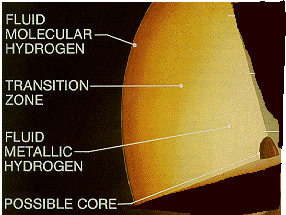
The first liquid layer inside Saturn, immediately under the atmosphere, is the liquid hydrogen layer. The hydrogen atmosphere becomes thicker and thicker, a fog with more and more liquid hydrogen droplets,
...more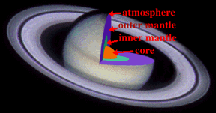
The Giant planets do not have the same layered structure that the terrestrial planets do. Their evolution was quite different than that of the terrestrial planets, and they have less solid material inside.
...more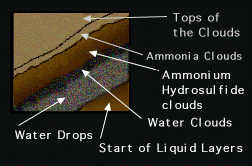
There is no surface to the giant planets, only a gradual transition from the atmosphere, as depicted in this drawing. The hydrogen and helium of which Saturn is mostly composed change to liquid form under
...more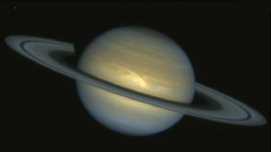
The most important motions in the atmosphere are winds. The major winds in Saturn's atmosphere are the zonal winds which are composed of alternating belts and zones flowing in opposite directions. Belts
...more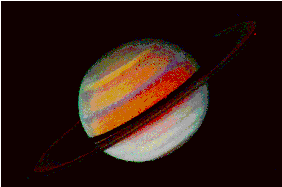
The striped cloud bands on Saturn, like Jupiter, are divided into belts and zones. In a belt, the wind flows very strongly in one direction only. In a zone, the wind flows very strongly in exactly the
...more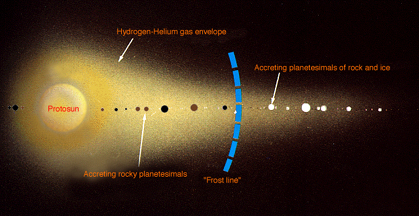
The position of the planets in the solar nebula greatly affected their 1. size and 2. composition. This is because of the effect of how cold it was in the nebula. 1. The nebula was a lot warmer close to
...more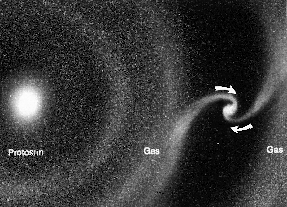
As shown in this picture, while they were forming in the solar nebula, the nucleii of the planets-to-be (called protoplanets) drew material to themselves from the cloud of gas and dust around them. The
...more














